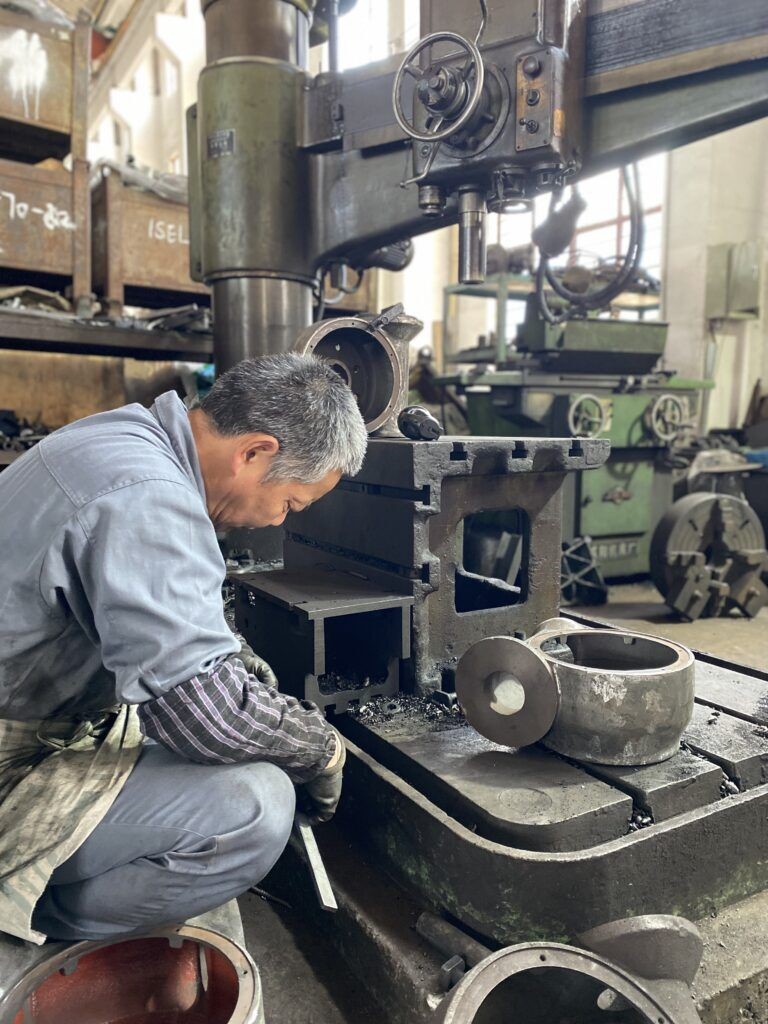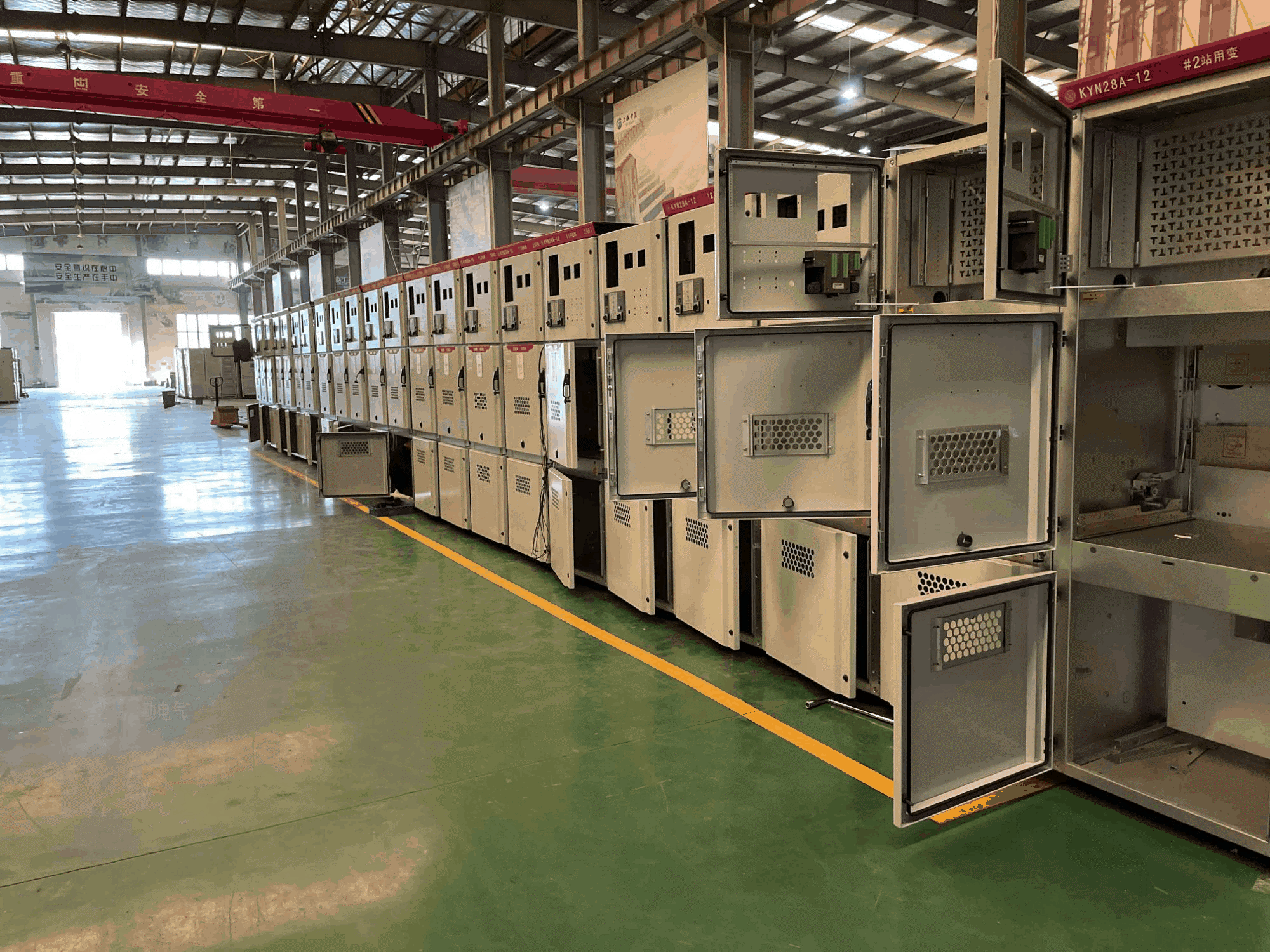Introduction
In order to manufacture switchgear, sheet metal fabrication is essential and requires unmatched quality and precision. Because switchgears’ complex components work under extreme pressure and voltage, even small mistakes or discrepancies could have disastrous consequences. A single flaw has the potential to cause major financial losses, safety hazards, and equipment failure. Aiming for the highest levels of accuracy and quality is therefore essential when it comes to sheet metal fabrication. The highest standards in sheet metal fabrication for switchgear can be attained by putting rigorous quality control procedures into place, streamlining production processes and strategically integrating cutting-edge technology.

Understanding the Challenges
It is a difficult task to achieve accuracy and high quality in sheet metal fabrication for switchgear because of several important factors:
Robust geometries and close tolerances: In order to guarantee maximum efficiency and security switchgear parts frequently have complex geometries and strict dimensions.
Material properties: Workability, thickness, and strength are important aspects of sheet metal that must be carefully taken into account during the fabrication process.
Meeting market demands without sacrificing product integrity: This requires maintaining high production rates while upholding strict quality standards. This needs striking a balance between efficiency and quality.
The Role of Technology
In the demanding field of switchgear manufacturing, the integration of advanced technology has revolutionized sheet metal fabrication. In order to attain the necessary accuracy and quality, CNC equipment and laser cutting have become essential resources.
CNC Machinery
These days, computer numerical control (CNC) equipment is the backbone of the sheet metal fabrication industry. These automated control machines consistently and precisely cut, bend, and punch materials with unparalleled accuracy. Switchgear components, which frequently need complex contours, depend on CNC bending machines, for example, to form complex shapes with consistent angles and radii.
With amazing speed and accuracy CNC punching machines produce precise holes slots and other features. CNC machinery provides a number of benefits over manual techniques.
First off, it greatly improves accuracy and lowers human error. The unpredictability that comes with manual processes is eliminated by CNC machines which work according to preprogrammed instructions.

Second, automation boosts efficiency and productivity. Because CNC machines can work nonstop they can produce more with fewer lead times and a higher output.
Furthermore, CNC technology enables the creation of complex parts that would be challenging or even impossible to produce using traditional methods. Regular maintenance and calibration are necessary for CNC machines to achieve optimal efficiency and accuracy.
In order to guarantee dimensional consistency in the output, calibration makes sure that the machines axes and tooling are accurately aligned. To avoid malfunctions, reduce downtime, and increase the machines’ lifespan, preventive maintenance is crucial.
Laser Cutting
With significant implications for sheet metal fabrication, laser cutting has become a cutting-edge technology. In this procedure, metal sheets are quickly and precisely cut through with a powerful laser beam. Using traditional cutting methods would make it difficult or impossible to achieve complex patterns, fine details, and intricate shapes. This is where laser cutting excels.
Laser cuttings remarkable cutting accuracy is one of its main benefits. It is not necessary to perform secondary finishing operations because the laser beam can produce edges that are clear and free of burrs. When it comes to switchgear components, precision is essential because precise tolerances are critical.
Furthermore, there is no material that cannot be cut with a laser copper aluminum and stainless steel—all of which are frequently utilized in the construction of switchgear—can all be cut with this incredible versatility. Moreover, waste reduction and material efficiency are enhanced by laser cutting. Optimizing material utilization, the laser beam can cut complex shapes with little material loss. This is especially crucial for pricey materials like stainless steel, where cutting waste results in substantial cost savings.
Laser cutting has a wide range of uses in the fabrication of switchgear components. Complexly geometrized enclosures panels and internal components are produced using it. Accurately cutting complex slots and apertures is necessary to make room for electrical components and to guarantee that the switchgear enclosure is properly ventilated.
Furthermore, laser cutting offers flexibility and adaptability by facilitating the production of individually designed components to fulfill particular project requirements. Manufacturers are able to fabricate sheet metal for switchgear at previously unheard-of levels of precision quality and efficiency by utilizing CNC equipment and laser cutting. These technologies serve as the cornerstone for manufacturing dependable and high-performing switchgear components when paired with knowledgeable operators and strong quality control systems.
Raw Material Selection and Control
The foundation of high-quality sheet metal fabrication for switchgear lies in the careful selection and control of raw materials. The performance, robustness, and overall switchgear reliability of a component are directly impacted by the sheet metal selection.
The mechanical qualities (hardness ductility and strength), electrical conductivity, corrosion resistance, and cost-effectiveness are important considerations when choosing a material. Verifying conformance with specified standards and guaranteeing material consistency require material testing and certification, which are essential.
Incoming material inspection is a critical quality assurance step. It involves thorough examination of incoming sheet metal for defects, impurities, and dimensional variations. This process helps prevent defective materials from entering the production process, saving time and resources.
Process Planning and Optimization
Achieving accuracy and efficiency in sheet metal fabrication requires careful process planning. To find possible problems and streamline the production process, meticulous design and engineering for manufacturability are crucial. Determining the most effective sequence of operations while taking material handling tooling and equipment utilization into account is the process of creating optimized production sequences.
An essential component of attaining precision is the design of fixtures and tools. Exquisite fixtures and tooling guarantee precise and reliable component production. In order to keep dimensional consistency and lower scrap rates, it is imperative to invest in precision tools and fixtures.
Quality Control and Inspection
Delivering goods that satisfy the highest standards requires a strong quality control system. During an in-process inspection important process variables are tracked and routine checks are made to find and address specification deviations. This proactive strategy aids in preventing defects from affecting other operations. Dimensional accuracy, surface finish, and conformance to design specifications are all checked for during the final product inspection process.

For accurate measurements and defect detection, advanced inspection techniques can be used such as coordinate measuring machines (CMMs) and optical inspection systems. A thorough quality control system must include both preventative and corrective measures. Root cause analysis should be carried out to ascertain the underlying causes of defects once they have been identified.
Continuous improvement requires taking corrective action to remove the underlying causes and stop recurrence. Proactive action is made possible by preventive measures like statistical process control (SPC) and process capability studies which assist in identifying possible issues before they arise. Through careful attention to these details, producers can lay the groundwork for creating superior sheet metal parts that satisfy the demanding specifications of switchgear applications.
Conclusion
A multifaceted approach is required to achieve exceptional precision and quality in sheet metal fabrication for switchgear. By combining state-of-the-art technology, stringent quality control, and optimized processes, manufacturers can produce components that meet industry standards. Sustaining leadership in this dynamic domain necessitates a relentless quest for enhancement via the integration of cutting-edge technologies and the implementation of insights-driven tactics. As technology advances, we can anticipate even greater precision and dependability in sheet metal fabrication for switchgear because of advancements in material manufacturing processes and inspection techniques.
External links:
https:// www.visiongain.com/switchgear-market-trends-analysis/
https://en.wikipedia.org/wiki/Switchgear
https://books.google.com.ph/books?id=HUCieJjeQ-wC&pg=PA101&redir_esc=y#v=onepage&q&f=false





